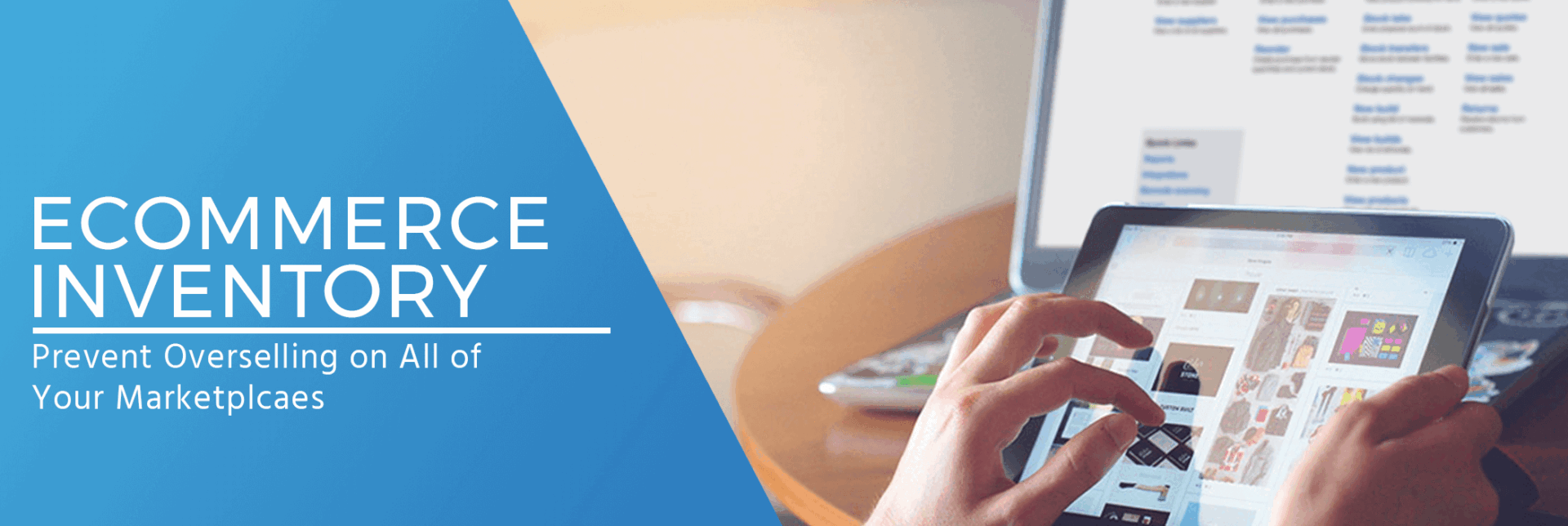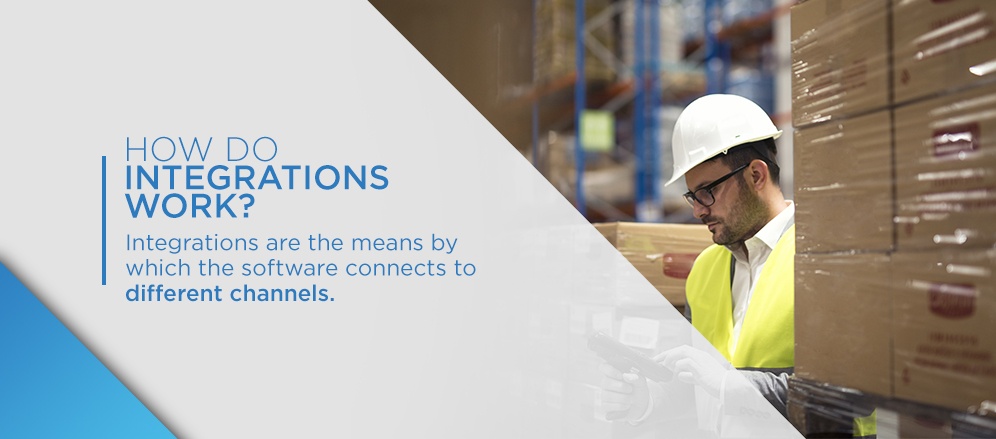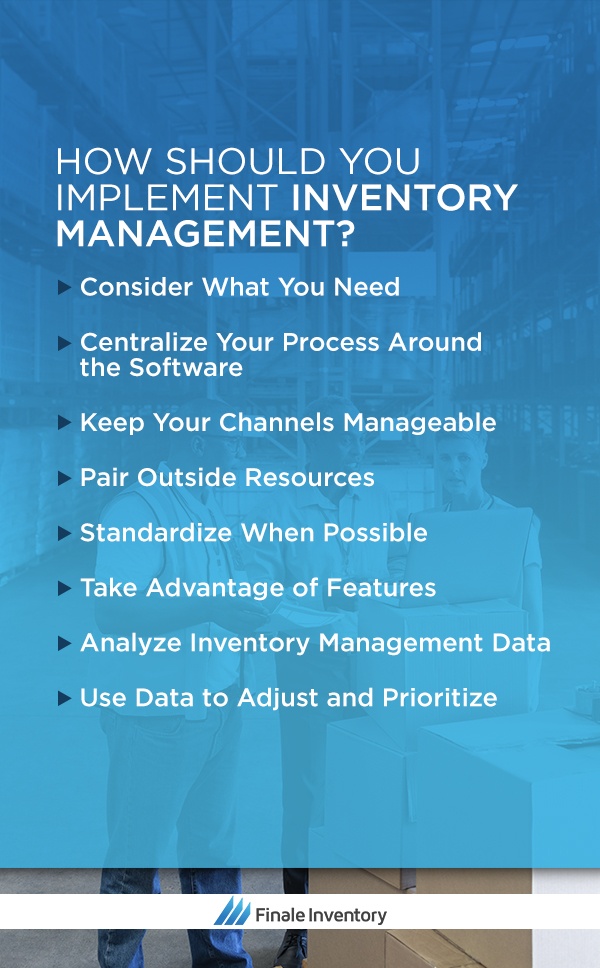
How Finale Inventory Can Help With Ecommerce Inventory Management
Finale Inventory offers top-notch multichannel ecommerce inventory management software for small and large businesses, which comes equipped with key features and benefits.
The following are some of the best features Finale Inventory offers, but certainly not all of them. In addition to our in-depth management capabilities, we offer world-class customer service, partnering with your business to get you the inventory management software you're looking for.

Cloud-Based System
One of the standout features of our software is that it is a cloud-based system. All your information is stored online rather than being limited to the software installed on one particular device. This feature eliminates dependence on specialized company servers that can only be accessed through specific computers. It also enables you to check your inventory numbers from anywhere without the risk of losing your information due to something like a server crash.
Our cloud-based system allows for scalability. This means you can expand your storage space with ease as your business grows, rather than spending time and money trying to acquire more hard drive space or upgrading your devices. It also eliminates issues prone to crop up on hard-drive-based systems, like duplicate files.
Multi-Warehouse Inventory
Another feature Finale Inventory offers is multi-warehouse inventory management. Tracking the numbers associated with one inventory across multiple channels is difficult enough without software. But what about when you have multiple channels and multiple physical locations where your inventory is stored? And what if you move that inventory between warehouses frequently?
Using Finale Inventory software, you can keep track of how much product is in stock at different warehouses and coordinate movements between those warehouses with ease. This task is where it can be especially helpful to integrate barcode scanners, sending information about every product you scan straight to your software.
API Support
If you have an in-house development team, Finale has robust APIs to further to increase the capabilities of the e-commerce inventory management system to your exact needs. The API is an efficient method to get automate the data going directly to and from Finale like creating products, creating purchase orders, and updating stock quantities. A popular application of our APIs is leveraging it to create an integrated EDI (electronic data interchange) solutions to streamline purchase orders with primary suppliers. For companies who leverage drop shippers in their supply chain, use the API to import supplier inventory stock levels at fixed intervals to always have a real-time of their inventory stock levels to enhance the e-commerce inventory management solution. Technical API documentation can be found here.
Kitting and Bundling
Sometimes you may want to sell multiple products together as a group, perhaps as part of a special deal or simply because two items go together well. Finale's kitting and bundling feature allows you to handle this procedure with ease. The software will process each purchase as a unit, but update the inventory numbers for each of the individual products.
Landed Costs
You may think you know how much you're spending on your various materials, but the truth is that there's more to your expenses than what your supplier charges upfront. You'll have to pay additional costs associated with things like freight, insurance, customs and tax. Finale Inventory enables you to take all these costs into account more easily and calculate the true expense of the items you purchase, so you can make sure you're staying on budget.
Powerful Reordering Capability
Leveraging the sales velocity of a product, Finale will automatically calculate dynamic reorder points based on your inputs – supplier lead time, desired safety stock, and expected sales growth — to make smarter, faster-purchasing decisions.
Restock forecasting from Finale gives you one less thing to worry about. When your inventory gets low, you will know it’s time to send out a purchase order. You can email the purchase order directly from Finale, and when you receive your shipment with Finale, it will update all your channels with the will be updated stock quantities.
Try Finale Inventory Today
If you're ready to put inventory software into action for your business, let Finale Inventory help you get started. We recognize that different businesses have different needs, so we'll work with you to determine the multichannel inventory solution that best fits your company. We've already helped many businesses optimize their process, and we're equipped and able to do the same for you.
If you want to get a feel for how our software works, we'll set you up with a real-time demo so you can see it in action. We also provide a free 14-day trial. To begin transforming your inventory management process, get in touch with us today!
Guide to Multichannel Inventory Management
Whether you're running a chain of physical store locations or selling all your products through your website, you've probably recognized the value of marketing in different ways. Having just one place where consumers can interact with your business isn't a very effective way to generate sales. Just like you diversify your ads and ad channels, it's also a great idea to set up multiple places where people can purchase your products.
If you're working to make this change happen for your business, you probably realize how intensive the process can be. That's where the value of multichannel inventory management software comes in. By having a program to help you, you can ensure your multichannel inventory is handled easily and efficiently.
Multichannel inventory management involves overseeing how your product inventory is distributed across the multiple outlets where your products are sold. You may have several places where customers can buy from you, but you have a limited number of products in stock at any given time.
It can be challenging to keep stock up to date at all the different places your products are sold, particularly online. Your stock may be depleted by purchases on one site, while the "in stock" label on another site hasn't changed — leading to people ordering products that you don't have available.
This problem has led to the creation of multichannel inventory management software. The core function of the software is to bring the places your products are sold, along with all the information on your inventory, into one location. This means that rather than jumping back and forth between different sites to gather all your sales data and keep your inventory numbers updated, you can simply open the management software and have access to all of it right there.
Finale Inventory integrates with more than 40 POS and e-commerce sales channels. It updates in real-time and is accessible from any computer. With it, you can view sales and inventory from a single location — and get an up-to-the-minute look at the state of your business.
With centralized inventory, Finale will mitigate overselling Finale Inventory automatically updates stock levels in Amazon and other marketplaces. You'll save the time and hassle of manually updating your online stores, you'll have fewer issues with your e-commerce partners and your customers will be able to shop with confidence knowing their purchase is in stock and ready to go.

How Should You Implement Inventory Management on Your Ecommerce Store?
Once you have your inventory management software, it can be tempting to think it will automatically offer a hands-off inventory solution. Of course, that isn't the case. Inventory management software is an incredible tool, but you need to know how to use it effectively for optimal results. Here are some of the best practices for multichannel inventory software to use its capabilities to make your sales and marketing a success.
The first step in the process is getting the software, and you shouldn't treat it as a quick or throwaway decision.
Different inventory management software is designed to fulfill different functions, making certain software types more optimal for some businesses than others.
To determine your choice of software, you need to assess what your company's needs are. Use the following questions to inform your decision:
- What do you sell?
- Who do you sell to?
- What channels do you sell through?
- How large is your business?
Asking these questions can help you learn what features your company needs to have in its software. Fortunately, Finale offers a broad range of features and integrations to choose from to help customize your software experience. We even offer custom integration solutions using our open API.
To learn more about ecommerce inventory management, check out our following resources:
Trusted by the World’s Leading Businesses - Big and Small


















 When a purchase is made, the software will update your inventory on each of the other sites to accurately reflect how much of each product you have in stock. These updates save an incredible amount of time and effort on your end. The alternative is to keep up with each channel manually, updating the channel with inventory information and simultaneously updating your inventory information based on purchases made on the channel.
When a purchase is made, the software will update your inventory on each of the other sites to accurately reflect how much of each product you have in stock. These updates save an incredible amount of time and effort on your end. The alternative is to keep up with each channel manually, updating the channel with inventory information and simultaneously updating your inventory information based on purchases made on the channel.

